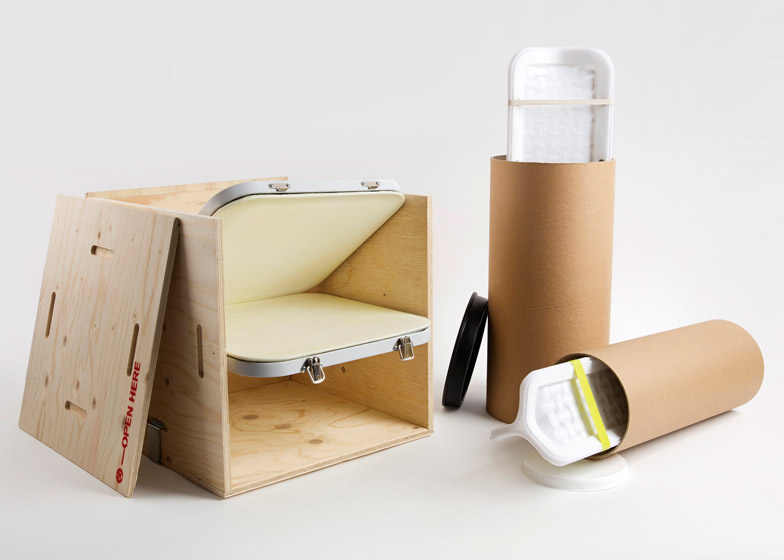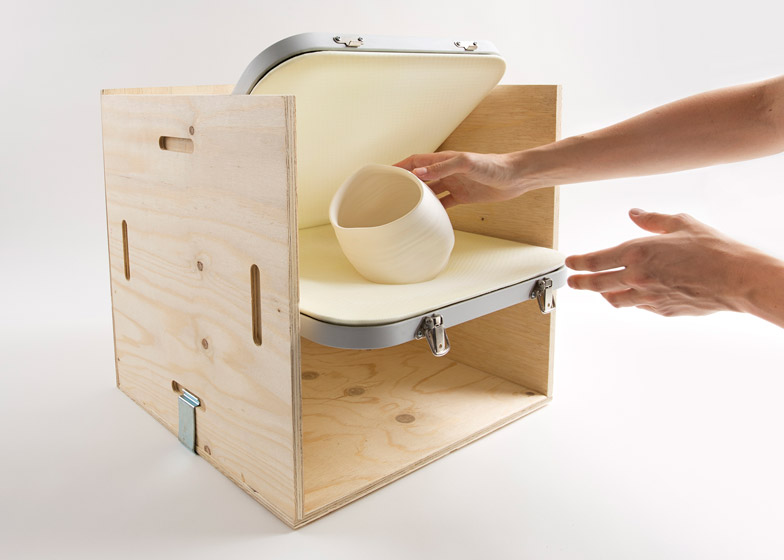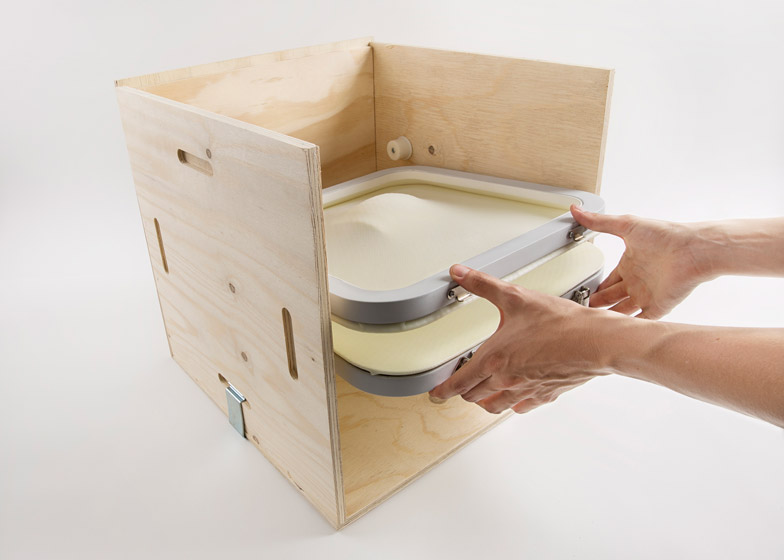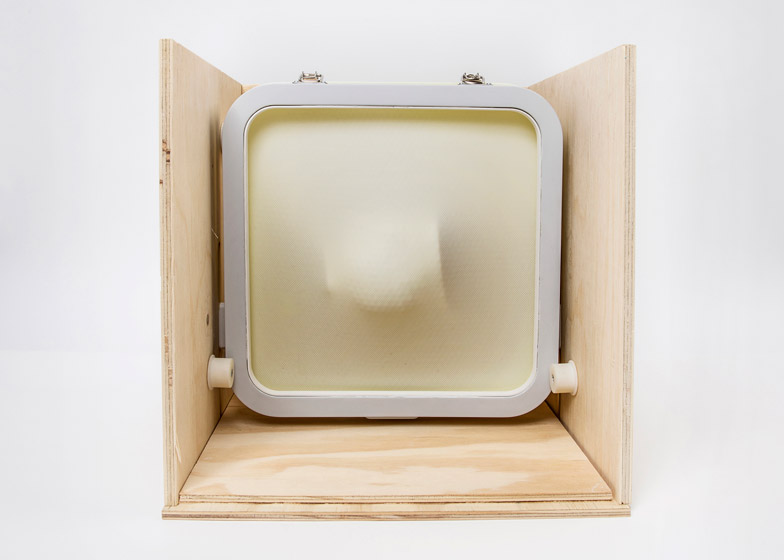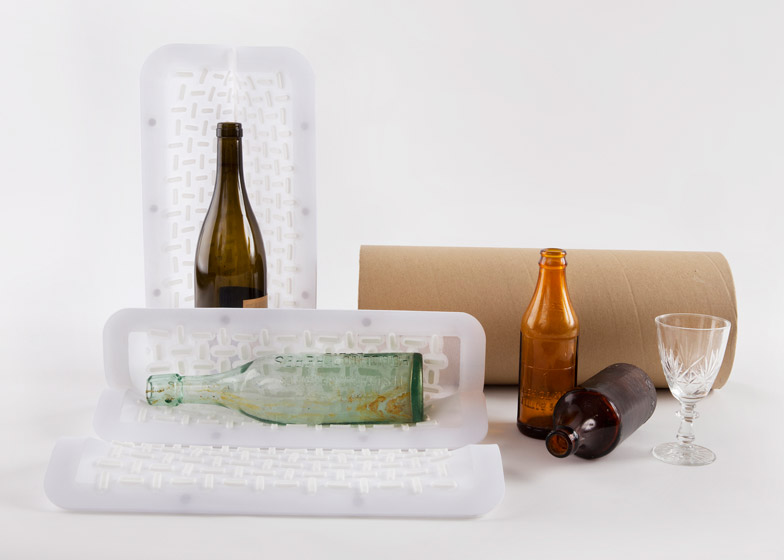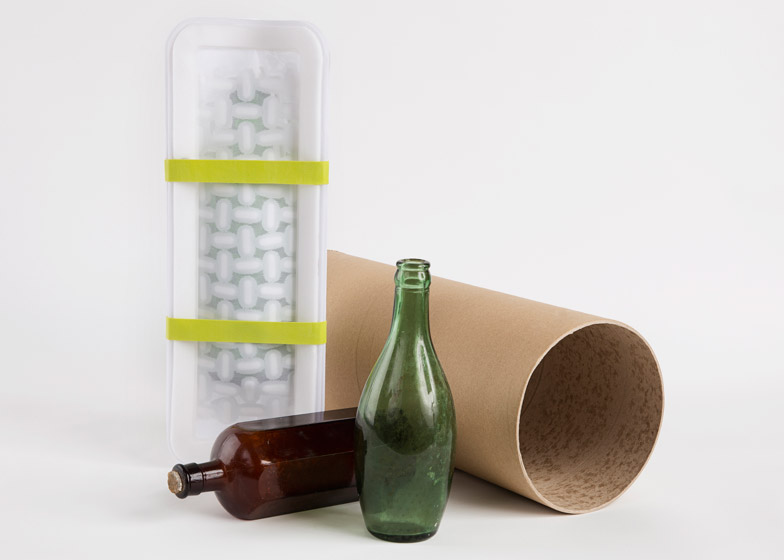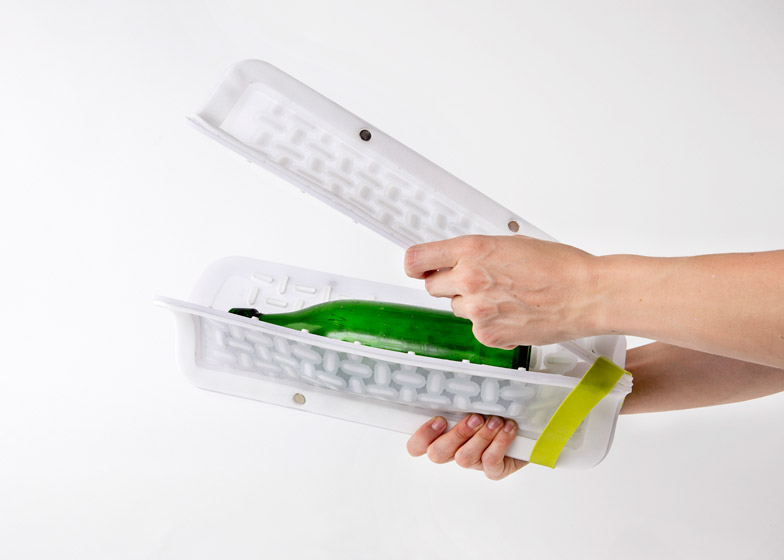Design graduate Mireia Gordi i Vila presents a flexible and reusable packaging system for valuable goods at the Royal College of Art (RCA) show in London, which opened today (+ slideshow).
Named Fragile, the packaging consists of a flexible membrane that creates a supportive skin around fragile items such as collectables and works of art, allowing them to be safely transported from one place to another.
Described by Gordi i Vila as "a standard for the non-standards", each package is reusable, modular, collapsible and able to fit inside existing logistics systems.
"Fragile looks into the world of shipping," she said. "It's a flexible packaging system designed to be a reusable companion to the packaged object rather than a disposable skin - an inquiry into the materiality and the typologies of transport packaging for valuable goods."
The project started as research into stretchable membranes – working out the minimum amount of material needed to support various objects.
"I did a series of experiments mixing elastic textiles of several kinds: power mesh, spandex, nylon net; with soft prosthetics silicones, Pro 10 gel, PLAT 10, and PU gels. The result is a stretchable cushioning membrane that is resilient, resistant and durable," said Gordi i Vila.
The Fragile system applies this membrane around rigid frames in order to create a tensile surface, like a drum or tambourine.
"Two or more of these frames together have the capacity to wrap around objects and create an instant bespoke packing," the designer told Dezeen. "The whole thing then fits inside a traditional packing crate, rendering the package anonymous and therefore less susceptible to theft."
"Eventually, I can imagine Fragile being adopted by generalist sellers such as Amazon or shipping companies like the Royal Mail. As online commerce increases, more and more goods are shipped individually from warehouses to customers, therefore, their handling and footprint should be re-evaluated," she said.
A second iteration of the Fragile principle has been applied to bottles and vases. The membrane allows certain variations in diameter and length while suspending the object in a self-standing outer skeleton, which slips inside a standard poster tube, a hard shall and anonymous case. Again, it is designed to be recovered and reused in multiple cycles for different objects.

"Fragile sees shipping as a service and builds a product around it," added the designer.
"Instead of using traditional disposable packing materials, Fragile crates are reusable and can be re-collected like glass bottles used to be. As a customer, you don’t need to own or pay for the shipping materials, as the packing is owned and reused by the warehouse or the shipping company."
The crates are modular, designed for disassembly, easy to repair, stackable and available in a range of sizes.
Originally from Barcelona, Mireia Gordi i Vila graduates from the Design Products course at the RCA. Before that she worked as a research and development designer in France and as a product and exhibition designer in The Netherlands.
Photography is by Anna Queralt Mamo.

